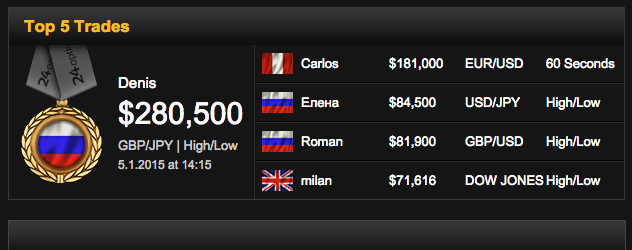Let Say Binary Options
- Posted in:Admin
- 08.11.18
- 66
• • Credit Cards • Best of • Compare cards • Reviews • Read & learn • • Banking • Best of • Compare accounts • Reviews • Read & learn • • Investing • Best of • Reviews • Popular tools • Guides • • Mortgages • Best of • Compare • Calculators • Read & learn • • Loans • Personal • Small business • Student • Auto • • Insurance • Auto • Life • • Money • Managing Money • Ways to save • Making money • Life events • • Travel • Travel • Best of • • • • • • • • Reviews • • • • • • • Popular tools • • • • • • • • Guides • • • • • • •. You know the saying: Don’t try to time the market. But binary options trading does just that. The investment strategy is frequently compared to gambling, for good reason: Investors are placing a bet on how a market or asset will move in the very near future.

Now that we have a basic idea on how binary option trades work, let’s take a look at a simple example. Let’s say, you decide to trade EUR/USD with the assumption that price will rise. The pair’s current price is 1.3000, and you believe that after one hour, EUR/USD will be higher than that level. Let’s establish one thing: binary options are not the same as standardized equity options. Standardized options are regulated by the Securities and Exchange Commission (SEC) and states and trade on recognized exchanges, such as the Chicago Board Options Exchange.
What are binary options? Forex technical analysis. In trading binary options, you’re predicting whether an asset class will be above or below a certain price at a certain time. Here’s where the gambling knock comes in.
If you’ve ever been to Las Vegas, it’s a little like. Predictions like this aren’t the best strategy for most investors. We strongly recommend a portfolio of index funds for long-term goals like retirement. But if you have some extra cash and you want to ease into, binary options contracts can be a decent way to do it. Binary options are often referred to as “yes or no” investments. If you think an asset will be above a set price, you’re predicting “yes” and buying the binary option.
If you think an asset class will fall below a set price, you’re predicting “no” and selling the binary option. There’s a low barrier to entry. A binary option contract won’t cost more than $100. You’re not buying the underlying investment or even the option to buy the underlying investment. You’re simply placing a bet on how that investment’s price will move.
These contracts always close at either $0 or $100; you either win or lose. If you predict the price movement correctly, you’re on the winning side of the trade, and the person on the other end of the contract — who predicted incorrectly — is on the losing side.
Your earnings or losses can’t top $100 on a single contract, which means your exposure to risk is limited. Limited, but far from nonexistent. You can trade multiple contracts to increase potential profits; the less fun side of that coin is that you’re also increasing potential losses.
Assets that can be traded as binary options As with other investments, the assets available to trade as binary options will depend on the broker you choose. That’s an important note. The binary options industry is so if you decide this is a trading strategy for you, it’s important to trade through a company that’s regulated by the U.S. Commodity Futures Trading Commission or the National Futures Association.
That’s a small list. Major brokers typically don’t offer binary options because they’re complex and not very popular. The largest regulated binary options broker in the U.S. In general, you can trade on: • Stock indexes, like the S&P 500, Nasdaq, Russell 2000 and FTSE 100.
• Forex (currency pairs). • Commodities, like precious metals, crude oil, natural gas, soybeans and corn. • Individual stocks. /binary-options-trading-signals-discount.html. • Economic events, like the federal funds rate or the jobs report. How binary option trades work To place a binary option trade, you’ll walk through three main steps: • Decide on an asset or market to trade. • Decide on an expiration date or time for the option to close. Most trading platforms let you sort by expiration date, so you can view contracts that expire within the next few hours or days.